Surely that’s not a question you think? Mulching is such an accepted practice in modern gardening, that querying this is surely sacrilegious! Gardening habits, like others in our lives, develop over time as society does. Gardening articles and texts are often over-simplified, with the best of intentions. But as gardeners, we learn that life and gardening are not made up of absolutes, and to be better custodians of our gardens, it’s useful to look at some of these rules and examine when they can help us and when they need to be rethought. So I ask, in what situations might mulching not be appropriate? To answer that question, I’ll take you on a quick tour of my gardening journey, pausing to reflect when a lesson on mulching was learned.
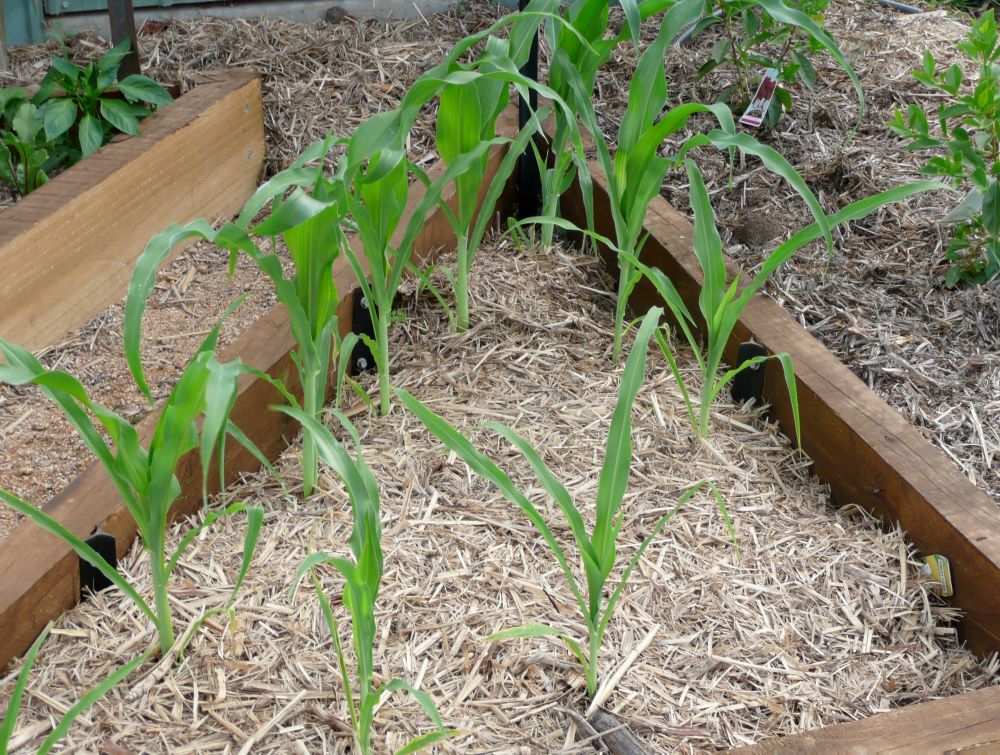
Mulching lesson #1 – bare soil and constant cultivation = stressed plants
This lesson is one you’d expect. I imagine you’re rolling your eyes, but this was a long time ago, and I was only beginning my gardening career. Cast your mind back 35 years, when gardening was still a way to control nature. Even before Instagram, gardens were meant to look perfect, with not a leaf out of place. As an apprentice gardener training at the Royal Melbourne Zoological Gardens, I worked on the vast annual beds sweeping down from the main entrance. One of my jobs was to spend hours removing every fallen leaf or twig, with the bare soil between the plants displaying flawless control over nature. Over time that control became tenuous, as the folly of bare soil in the annual beds showed up as stressed plants that developed diseases, due also in part to our constant cultivation of the soil and the subsequent organic matter decline. As such problems arose and opinions shifted, the soil was replenished with compost made in-house. Annual growers now would not think of leaving bare soil between their plants!
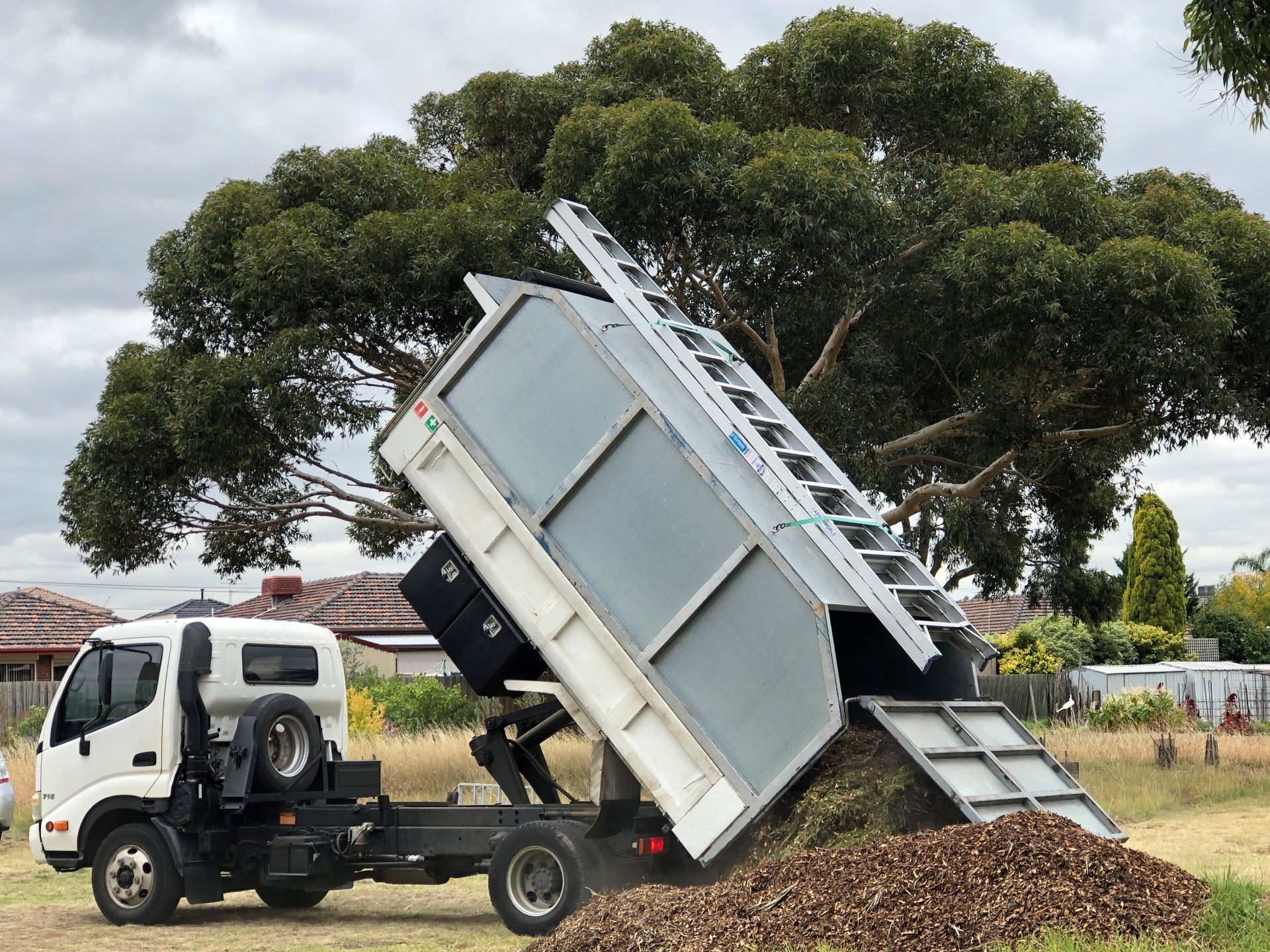
Mulching lesson # 2 – Chop and drop can be snail heaven!
As an enthusiastic young home gardener, about 30 years ago, I was keen to apply the lessons of permaculture and was madly chopping and dropping every branch I pruned in my garden. That’s when I learned mulching lesson #2. Over time I found that the coarse mulch I was producing was a fantastic breeding ground for snails, who sheltered there during the day, emerging at night to decimate my garden. Over time, a Briggs and Stratton mulcher became my friend, and my garden prunings are now returned to the soil as mulch. With well-established trees providing a constant supply of branches, I never have to buy woody mulch and this finely shredded mulch doesn’t provide snails a home.

Lesson # 3 – Earwig explosion
In my home vegetable garden, again I was permaculture planting, with all year round harvests my aim. I planted annuals with the seasons, but gradually gathered a collection of longer-lasting or perennial food plants, such as perpetual spinach, lemon sorrel, rhubarb and lots of self-seeding plants, such as flat leaf parsley, rocket, land cress and various mustards. After a few years of continuous gardening in this area, my leafy greens started looking like they’d been in a hailstorm, with holes all over them. Harvesting involved vigorously shaking each bunch of leaves over a bucket of water to drive out droves of earwigs, and try and diminish their ever increasing numbers. Soaking greens in the kitchen sink just increased the earwig population in my kitchen, as they scuttled in all directions.
I tried baiting them with fish oil on scrunched-up newspaper, hidden in upside down plant pots; also, with vegetable oil in sealed plastic containers with a small access hole for them to enter and hopefully drown. Frustrated, I cast around for help, and happened upon a man who professed to be a Professor of earwigs. (Is that really a thing I wondered?) Maybe it was the desperation in my voice, but he listened to my dilemma, and explained how I’d arrived at this situation and how to remedy it.
My kindly earwig professor told me that by growing food continuously in the same area, without any seasonal clearing of plants or mulch, I had allowed pest insects to build up. Seasonal conditions had also been a factor. But primarily, the constant foliage in my vegetable patch gave them places to over-winter, so populations were never diminished by cold weather. To turn this situation around, I had to clear out my garden at times, including the mulch. I learned that late autumn was a great time to do this, to let the cold of winter do its job, and knock out as many pests as possible. Think of a mulch changeover as a kind of mulch version of crop rotation.
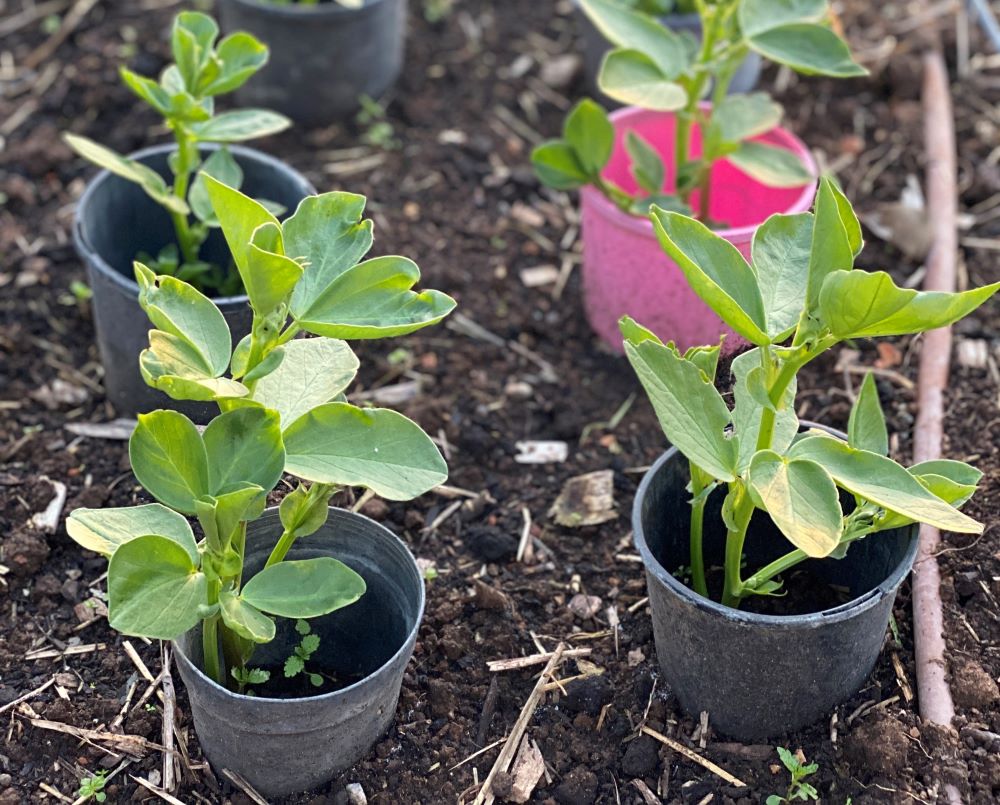
Lesson # 4 – Slaters gone rogue
Over the years, I’ve helped out at my parent’s property in country Victoria and have always loved working in the vegetable garden. A few years ago, we started having unusual failures, such as all seedlings planted out failing within a day or so. Seeds would sprout but then disappear overnight. Thinking back to my earwig explosion, I wondered if something was building up in the garden beds. These beds were mostly cleared and replanted, with only a little self-seeding so this shouldn’t be an issue I thought. I mused on this while preparing the garden to replant one spring. Pulling back the mulch, I found a seething mass of slaters, usually thought of as benign decomposers. With some more observations, my suspicions were confirmed, that the slaters had gone rogue and when the straw mulch was spread around the new seedlings, the slaters chomped them off at ground level. Sprouting seeds were given the same treatment, and hardly saw the light of day. Even newly planted shrubs were having their stems badly damaged if they had this slater-filled straw mulch spread around them. To solve this, I had to employ a number of strategies. I used plant pots with the bottoms cut off, pushed into the soil as guards around new plants until they were better established. I had to leave new seedlings with bare soil around them until they got established, only spreading mulch later. Winter is always a ‘mulch off’ time for my vegetable gardens now, to help reduce pest numbers. You can check out my YouTube video ‘Slaters and Silverbeet’ on Karen Sutherland YouTube, to get some more insights.
Lesson # 5 – Mulch for healthy tomatoes
Most of us use mulch in our gardens to help retain soil moisture and keep pesky weeds at bay. Some mulches also assist in building up the structure and organic matter levels in the soil as they break down. Many of us choose woody mulches for use around shrubs and trees, and straw mulches around our vegetables, as there is evidence that matching mulch to plant type is also a microbial match. But until I was researching tomato problems for my part of ‘Tomato Know Sow Grow Feast’, I hadn’t realised how useful mulches were to tomatoes and other vegetables, beyond keeping moisture levels up and weeds down. It turns out that a range of problems can be controlled by mulching. Cracking in large tomato fruits is caused by uneven temperatures, so mulching can help by keeping soil temperatures more even. Heat stress wilt, physiological leaf roll and also blossom drop can be controlled by mulching for the same reason. Keeping mulch away from tomato plant stems can prevent Sclerotium stem rot from occurring. Importantly, using fresh mulch each time you plant tomatoes helps diseases like Septoria leaf spot, grey mould, late blight, powdery mildew, bacterial blight and anthracnose from building up. As many of these spread by rain splash on soil, they can also be partly controlled by the use of mulch around plants to diminish rain splash.
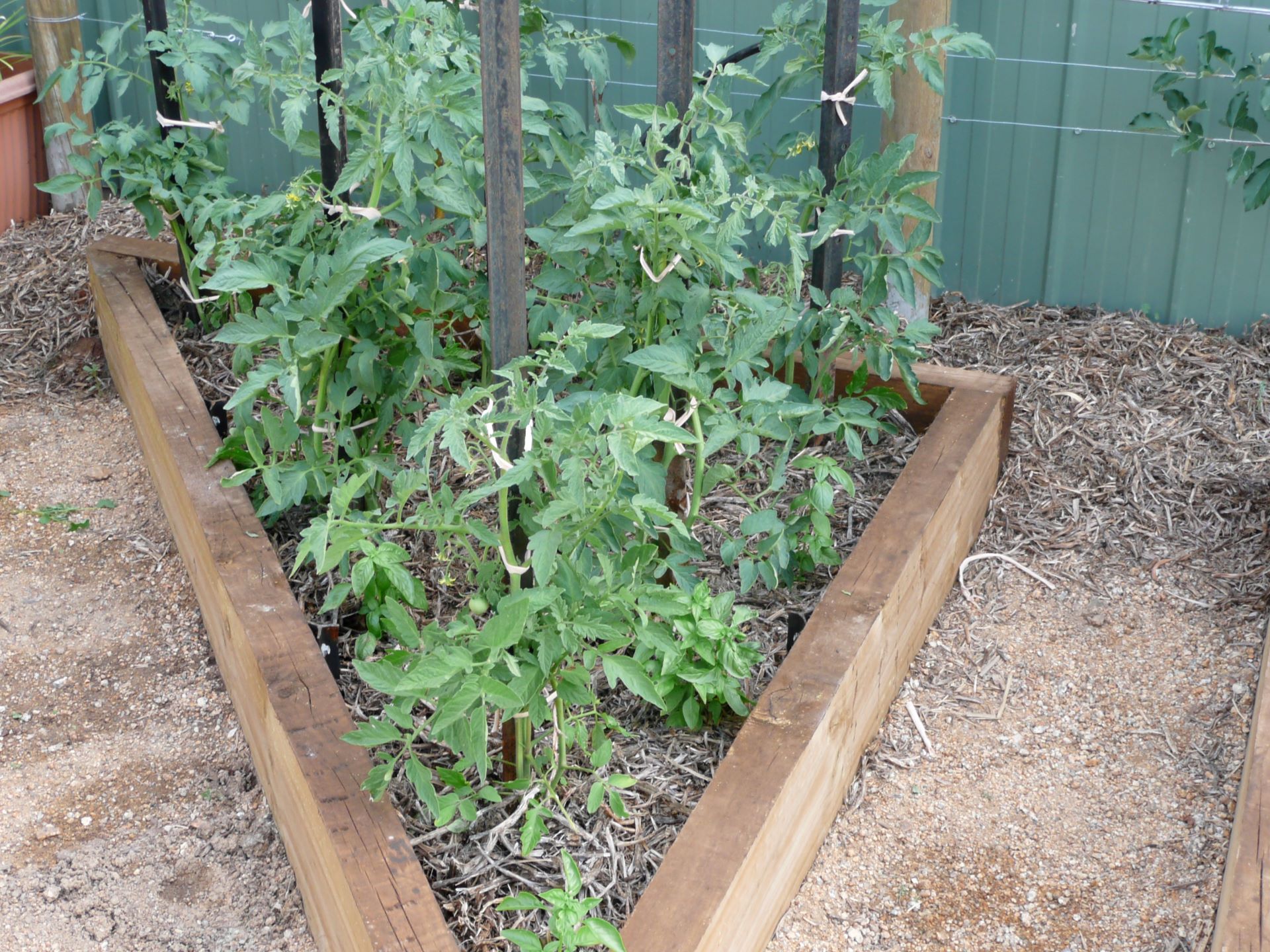
Lesson # 6 – Bare soil for bees
I’d like to finish on a topic that’s front of mind now, and that is how to make our gardens more wildlife friendly, also encouraging beneficial insects, such as native bees. We can do this by supplying a diverse range of flowering plants, safe access to fresh water and also leaving sprays on the shelf at the shop, but bees need homes to live in. Some native bees like to make their nests in reeds, but others like access to earth, bare earth. It’s recommended that you leave a metre or so of bare earth in your garden as an invitation to native earth dwellers such as blue-banded, teddy bear and Homalictus bees. One day at my parent’s land I was surprised to see part of a leaf flying through the air near me and watched as a leafcutter bee manoeuvred it down its hole in the ground in a fairly bare area of soil.
Is the moral to the story that you should question all gardening advice? I think it’s safer to say that making careful observations and keeping an open mind will help you decide what’s best in your situation, in your garden.

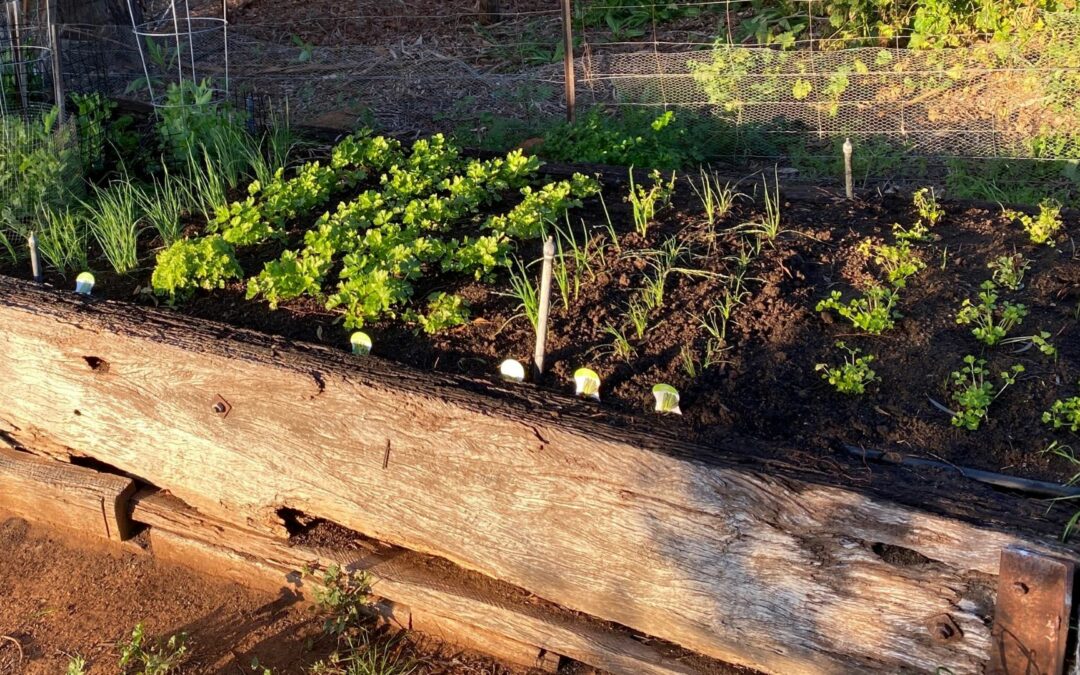
Recent Comments